10 iconic burger chains that vanished from American roads—do you remember these?
By
Veronica E.
- Replies 0
Burgers and fries have long been the classic American comfort combo—whether fueling a cross-country road trip, an after-school hangout, or a quick family dinner.
While names like McDonald’s and Burger King still dominate the drive-thru scene, they weren’t always the only choices.
Decades ago, the fast-food landscape was full of smaller, quirky burger joints with loyal followings and signature items that became neighborhood legends.
Many of those beloved chains are now gone, but their stories live on in the memories of those who grew up eating there.
From flame-broiled underdogs to Happy Meal pioneers, these vanished burger spots helped shape the golden age of fast food.
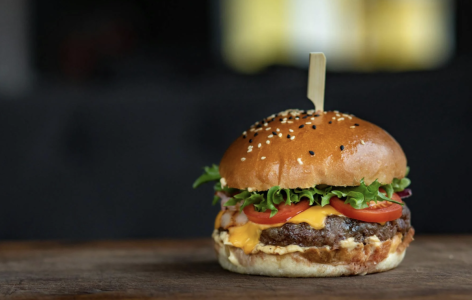
Red Barn: Barn-shaped buildings and Big Barneys
If you ever saw a barn-shaped restaurant off the highway, there’s a good chance it was a Red Barn.
Founded in 1961 in Springfield, Ohio, the chain stood out with its rustic architecture and menu favorites like the Big Barney and Barnbuster—direct rivals to the Big Mac and Quarter Pounder.
Red Barn was also one of the first to offer a self-serve salad bar, long before “fresh” became a buzzword.
The chain grew to 400 locations but lost momentum after ownership changes in the late ’70s.
Most locations shut down by the ’80s, with a few rebranded as The Farm before disappearing entirely.
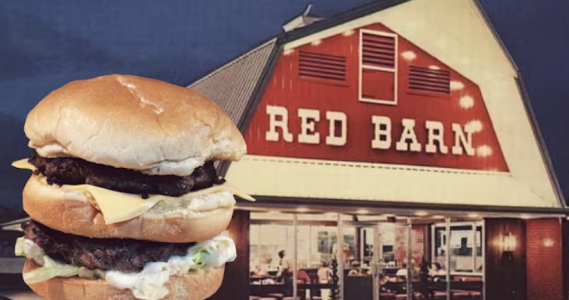
Burger Chef: The original Happy Meal idea
Years before McDonald’s debuted its Happy Meal, Burger Chef was handing out “Funmeals” that came with a toy, burger, fries, drink, and dessert.
The chain was founded in 1957 by two brothers in Indianapolis and quickly grew to 1,200 locations, making it a serious competitor.
But by the early 1980s, financial struggles led to a sale to Hardee’s, and most Burger Chef locations were either closed or rebranded.
The last one closed in Cookeville, Tennessee, in 1996.
Though it’s gone, its influence lives on in every kids’ meal today.
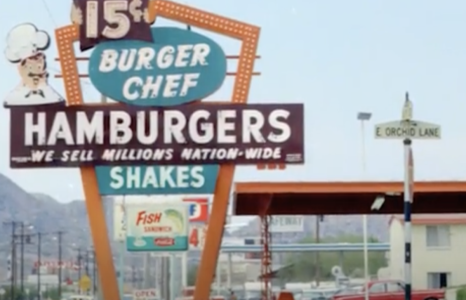
Also read: These 6 fast-food chains are serving up real fries—freshly cut, not frozen
Biff Burger: A spicy-sauced broiler legend
Biff-Burger—short for “Best in Fast Food”—gained popularity in the ’50s with its patented Roto-Red Broiler that flame-broiled burgers and toasted buns simultaneously.
Fans still remember the 27-spice sauce and prefab “Port-A-Unit” buildings that made it easy to set up new locations.
The Mary Carter Paint Company took over the chain in 1962, shifting its focus to casinos, which eventually led to its decline.
By the 1980s, most locations had closed.
The last known Biff-Burger in St. Petersburg, Florida, served its final burger in 2021.
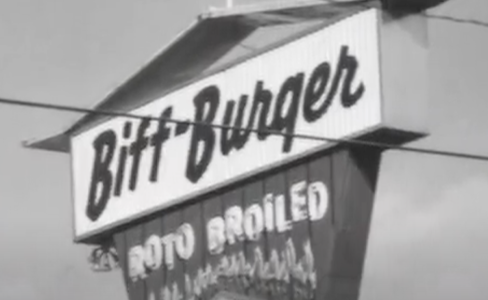
Carrols: Burger King before Burger King
Carrols was a popular chain in upstate New York, started in 1956, known for its Club Burger and creamy milkshakes.
As McDonald’s and Burger King expanded, Carrols’ owners made a strategic decision: rather than compete, they converted their locations into Burger Kings.
The Carrols name vanished by 1981, but the company still exists today—as one of the largest Burger King franchisees in the country.
So while the name is gone, its legacy continues under a different crown.
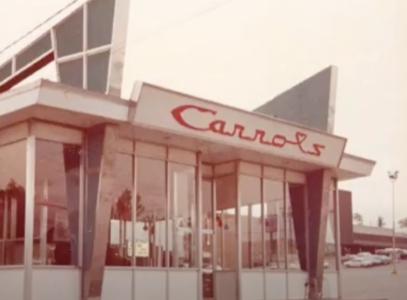
Also read: Is your favorite burger joint vanishing? Major chain to shut down 200 locations
White Tower: A White Castle lookalike
White Tower launched in 1926 and bore a striking resemblance to White Castle—from the miniature fortress-style buildings to the slider-heavy menu.
After a lawsuit in 1934, some branding changed, but the chain still expanded to 230 locations by the ’50s.
It couldn’t hold on, though, as larger chains dominated the fast-food space. The last White Tower locations closed in the early 2000s.
For many, those sliders represented a simpler, more affordable era.
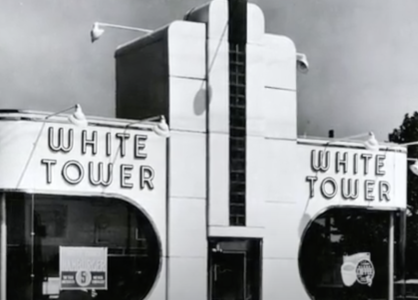
Gino’s Hamburgers: Burgers and football pride
NFL star Gino Marchetti helped launch Gino’s in 1957, and the chain quickly became a Mid-Atlantic favorite.
Known for its sirloin steak burgers and the Gino Giant, Gino’s also served Kentucky Fried Chicken at many locations—an unusual combo that worked.
After a failed national expansion, Marriott purchased the chain in 1982 and converted most locations into Roy Rogers.
A brief revival effort in the 2010s didn’t stick, but the Gino Giant still holds a place in burger history.
Also read: Forgotten picnic classics from the 1960's worth bringing back
Druther’s: The fairy tale of Burger Queen
Starting as Burger Queen in 1956, this Kentucky-based chain rebranded to Druther’s in 1981 and swapped its bee mascot, Queenie Bee, for Andy Dandytale.
It was a whimsical effort to stand out from competitors, offering a mix of burgers, fried chicken, and sides.
At its height, there were 171 Druther’s locations.
By 1990, most had transitioned to Dairy Queen franchises.
But one Druther’s remains in Campbellsville, Kentucky, still serving classic meals and memories.
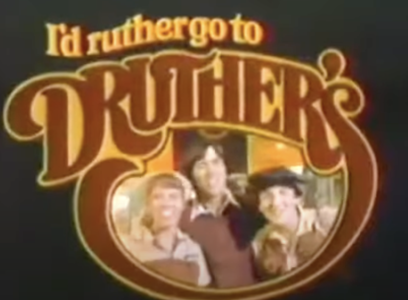
Wetson’s: New York’s early burger rival
Wetson’s was a homegrown favorite in the New York area, serving up 15-cent burgers and 10-cent fries starting in 1959.
Their signature “Big W” burger was a local competitor to the Big Mac.
At one point, Wetson’s operated 70 locations across the region.
But McDonald’s and Burger King arrived in force during the ’70s, and Wetson’s couldn’t compete.
Most were sold to Nathan’s Famous, and the name faded from view by 1975.

Also read: Holding onto the hot seat: Hooters’ daring move to dodge disaster
Yankee Doodle Dandy: Patriotic burgers and chicken
Yankee Doodle Dandy opened in 1966 and leaned heavily into Americana, with patriotic branding and commercials featuring a Betsy Ross-like figure.
The menu included club sandwiches, chicken tenders, and burgers, and the chain peaked at 27 locations.
In the early 1980s, the founders pivoted to casual dining, and the brand was phased out.
Still, its star-spangled theme left an impression on those who dined there.
Royal Castle: Sliders and birch beer in the South
Founded in Miami in 1938, Royal Castle became known for its small, square sliders, birch beer, and fresh orange juice.
It once had more than 200 locations across the South and Midwest.
But after a 1969 buyout and mounting financial issues, most of the chain was gone by 1975.
Amazingly, one Royal Castle still operates in Miami today, offering a nostalgic bite of history.

Also read: Pizza Hut is changing—here’s what’s replacing the red booths and salad bars you remember
Why these chains disappeared
Many of these burger spots were innovators—bringing in new menu ideas, marketing tricks, or operational strategies before the bigger chains followed suit.
But fierce competition, over-expansion, ownership changes, and evolving tastes made it hard to stay afloat.
Some faded quietly; others were absorbed into larger brands.
A handful, like Druther’s and Royal Castle, still survive in a single location, offering a living taste of America’s fast food past.
Read next: 10 classic beers that have faded from the spotlight

Did you have a favorite neighborhood burger joint growing up? Whether it was the Big Barney at Red Barn, the Funmeal at Burger Chef, or the patriotic vibes of Yankee Doodle Dandy, we’d love to hear your story.
Share your memories in the comments and keep the legacy of these lost burger chains alive!
While names like McDonald’s and Burger King still dominate the drive-thru scene, they weren’t always the only choices.
Decades ago, the fast-food landscape was full of smaller, quirky burger joints with loyal followings and signature items that became neighborhood legends.
Many of those beloved chains are now gone, but their stories live on in the memories of those who grew up eating there.
From flame-broiled underdogs to Happy Meal pioneers, these vanished burger spots helped shape the golden age of fast food.

A bite of nostalgia: many of these lost burger chains still live on in the memories of longtime customers. Image source: Pexels / Valeria Boltneva.
Red Barn: Barn-shaped buildings and Big Barneys
If you ever saw a barn-shaped restaurant off the highway, there’s a good chance it was a Red Barn.
Founded in 1961 in Springfield, Ohio, the chain stood out with its rustic architecture and menu favorites like the Big Barney and Barnbuster—direct rivals to the Big Mac and Quarter Pounder.
Red Barn was also one of the first to offer a self-serve salad bar, long before “fresh” became a buzzword.
The chain grew to 400 locations but lost momentum after ownership changes in the late ’70s.
Most locations shut down by the ’80s, with a few rebranded as The Farm before disappearing entirely.

A look back at Red Barn’s iconic barn-shaped restaurant, once a familiar sight across the Midwest. Image source: YouTube / Retro Pop Planet.
Burger Chef: The original Happy Meal idea
Years before McDonald’s debuted its Happy Meal, Burger Chef was handing out “Funmeals” that came with a toy, burger, fries, drink, and dessert.
The chain was founded in 1957 by two brothers in Indianapolis and quickly grew to 1,200 locations, making it a serious competitor.
But by the early 1980s, financial struggles led to a sale to Hardee’s, and most Burger Chef locations were either closed or rebranded.
The last one closed in Cookeville, Tennessee, in 1996.
Though it’s gone, its influence lives on in every kids’ meal today.

Burger Chef’s playful Funmeal boxes paved the way for today’s kids’ meals. Image source: YouTube / DoYouRemember?.
Also read: These 6 fast-food chains are serving up real fries—freshly cut, not frozen
Biff Burger: A spicy-sauced broiler legend
Biff-Burger—short for “Best in Fast Food”—gained popularity in the ’50s with its patented Roto-Red Broiler that flame-broiled burgers and toasted buns simultaneously.
Fans still remember the 27-spice sauce and prefab “Port-A-Unit” buildings that made it easy to set up new locations.
The Mary Carter Paint Company took over the chain in 1962, shifting its focus to casinos, which eventually led to its decline.
By the 1980s, most locations had closed.
The last known Biff-Burger in St. Petersburg, Florida, served its final burger in 2021.

The vintage glow of a Biff Burger sign brings back memories of flame-broiled favorites. Image source: YouTube / Recollection Road.
Carrols: Burger King before Burger King
Carrols was a popular chain in upstate New York, started in 1956, known for its Club Burger and creamy milkshakes.
As McDonald’s and Burger King expanded, Carrols’ owners made a strategic decision: rather than compete, they converted their locations into Burger Kings.
The Carrols name vanished by 1981, but the company still exists today—as one of the largest Burger King franchisees in the country.
So while the name is gone, its legacy continues under a different crown.

A classic Carrols location before its transformation into Burger King outlets. Image source: YouTube / Restaurant Rewind.
Also read: Is your favorite burger joint vanishing? Major chain to shut down 200 locations
White Tower: A White Castle lookalike
White Tower launched in 1926 and bore a striking resemblance to White Castle—from the miniature fortress-style buildings to the slider-heavy menu.
After a lawsuit in 1934, some branding changed, but the chain still expanded to 230 locations by the ’50s.
It couldn’t hold on, though, as larger chains dominated the fast-food space. The last White Tower locations closed in the early 2000s.
For many, those sliders represented a simpler, more affordable era.

White Tower’s castle-like design made it a standout on American streets in the 20th century. Image source: YouTube / Recollection Road.
Gino’s Hamburgers: Burgers and football pride
NFL star Gino Marchetti helped launch Gino’s in 1957, and the chain quickly became a Mid-Atlantic favorite.
Known for its sirloin steak burgers and the Gino Giant, Gino’s also served Kentucky Fried Chicken at many locations—an unusual combo that worked.
After a failed national expansion, Marriott purchased the chain in 1982 and converted most locations into Roy Rogers.
A brief revival effort in the 2010s didn’t stick, but the Gino Giant still holds a place in burger history.
Also read: Forgotten picnic classics from the 1960's worth bringing back
Druther’s: The fairy tale of Burger Queen
Starting as Burger Queen in 1956, this Kentucky-based chain rebranded to Druther’s in 1981 and swapped its bee mascot, Queenie Bee, for Andy Dandytale.
It was a whimsical effort to stand out from competitors, offering a mix of burgers, fried chicken, and sides.
At its height, there were 171 Druther’s locations.
By 1990, most had transitioned to Dairy Queen franchises.
But one Druther’s remains in Campbellsville, Kentucky, still serving classic meals and memories.

Druther’s offered burgers and fairy tale charm with its quirky mascots. Image source: YouTube / Druther's - Burger Queen.
Wetson’s: New York’s early burger rival
Wetson’s was a homegrown favorite in the New York area, serving up 15-cent burgers and 10-cent fries starting in 1959.
Their signature “Big W” burger was a local competitor to the Big Mac.
At one point, Wetson’s operated 70 locations across the region.
But McDonald’s and Burger King arrived in force during the ’70s, and Wetson’s couldn’t compete.
Most were sold to Nathan’s Famous, and the name faded from view by 1975.

Wetson’s Big W burger and neon signs once lit up New York’s fast-food scene. Image source: YouTube / Restaurant Rewind.
Also read: Holding onto the hot seat: Hooters’ daring move to dodge disaster
Yankee Doodle Dandy: Patriotic burgers and chicken
Yankee Doodle Dandy opened in 1966 and leaned heavily into Americana, with patriotic branding and commercials featuring a Betsy Ross-like figure.
The menu included club sandwiches, chicken tenders, and burgers, and the chain peaked at 27 locations.
In the early 1980s, the founders pivoted to casual dining, and the brand was phased out.
Still, its star-spangled theme left an impression on those who dined there.
Royal Castle: Sliders and birch beer in the South
Founded in Miami in 1938, Royal Castle became known for its small, square sliders, birch beer, and fresh orange juice.
It once had more than 200 locations across the South and Midwest.
But after a 1969 buyout and mounting financial issues, most of the chain was gone by 1975.
Amazingly, one Royal Castle still operates in Miami today, offering a nostalgic bite of history.

Royal Castle was known for its small burgers, birch beer, and 24-hour service. Image source: YouTube / wolfsonarchive.
Also read: Pizza Hut is changing—here’s what’s replacing the red booths and salad bars you remember
Why these chains disappeared
Many of these burger spots were innovators—bringing in new menu ideas, marketing tricks, or operational strategies before the bigger chains followed suit.
But fierce competition, over-expansion, ownership changes, and evolving tastes made it hard to stay afloat.
Some faded quietly; others were absorbed into larger brands.
A handful, like Druther’s and Royal Castle, still survive in a single location, offering a living taste of America’s fast food past.
Read next: 10 classic beers that have faded from the spotlight
Key Takeaways
- Many iconic burger chains from the 1950s to 1980s—like Red Barn, Burger Chef, and Wetson’s—have disappeared, but their influence on fast food still lingers today.
- Some introduced ideas we now take for granted, such as kids’ combo meals, flame-broiled burgers, and salad bars.
- Most chains vanished due to increased competition, poor financial decisions, or decisions to convert into bigger brands like Burger King and Dairy Queen.
- A few holdouts like Druther’s and Royal Castle are still in operation, offering nostalgic meals and a window into America’s fast-food past.
Did you have a favorite neighborhood burger joint growing up? Whether it was the Big Barney at Red Barn, the Funmeal at Burger Chef, or the patriotic vibes of Yankee Doodle Dandy, we’d love to hear your story.
Share your memories in the comments and keep the legacy of these lost burger chains alive!






